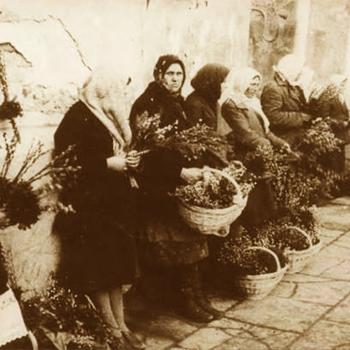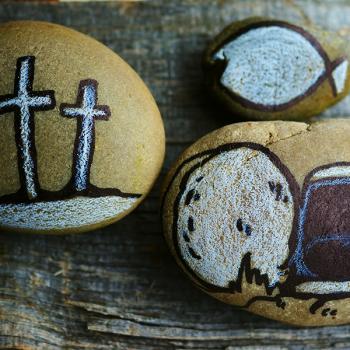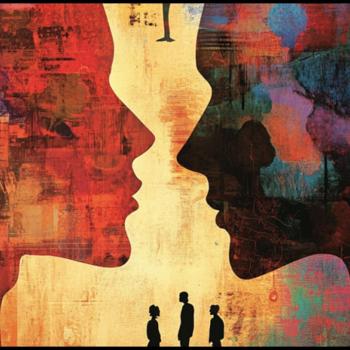Pentecost celebrates the time when the Holy Spirit descended on a group of Christ's followers ten days after Jesus' ascent to heaven. Back then, Christians were still Jewish (give that a minute to register), and a group of 120 disciples had gathered to celebrate the Jewish festival of Shavuot (which merits its own slot on this list). As the Book of Acts relates, the people heard what sounded like a rush of wind and saw tongues of fire hovering above them. Then they began speaking in tongues and imparting the teachings of Jesus. Those signs -- wind, tongues of fire, and speaking in tongues -- were believed to indicate the presence of the Holy Spirit. On that day alone, some 3,000 people converted to the new faith. Consequently, many Christians believe that this experience -- receiving the gift of the Holy Spirit -- marks the launch of the Christian Church.
In Anglican churches, Pentecost is often called Whitsunday (an adaptation of White Sunday) because it was a popular day for baptisms, during which preachers donned white robes. However, some worshippers wear red on Pentecost, as a symbol of the tongues of fire. And if you suspected an etymological connection between the Pentecost holiday and the Pentecostal branch of Christianity, you guessed correctly. Pentecostals believe that baptism in the Holy Spirit, in which believers are overcome by the Spirit and speak in tongues, is a separate experience from baptism with water -- and that the faithful should undergo both. Not surprisingly, Pentecost is a particularly important day in Pentecostal churches, though it's celebrated by virtually all Christian sects.
4. The Church of Jesus Christ of Latter-day Saints: Pioneer Day
 If you've ever visited Salt Lake City, you know the presence of the Mormon Church -- The Church of Jesus Christ of Latter-day Saints -- looms large. And yet, there was a time when the Great Salt Lake was nothing more than a big body of water with no city beside it. All that changed when Brigham Young, the leader of the nascent Mormon Church, headed west. After a grueling trek that brought him and 15,000 followers to the shores of the lake on July 24, 1847, he took one look at the landscape before him and declared, "This is the place." And just like that, Young proclaimed himself president of a new and independent nation known as the State of Deseret.
If you've ever visited Salt Lake City, you know the presence of the Mormon Church -- The Church of Jesus Christ of Latter-day Saints -- looms large. And yet, there was a time when the Great Salt Lake was nothing more than a big body of water with no city beside it. All that changed when Brigham Young, the leader of the nascent Mormon Church, headed west. After a grueling trek that brought him and 15,000 followers to the shores of the lake on July 24, 1847, he took one look at the landscape before him and declared, "This is the place." And just like that, Young proclaimed himself president of a new and independent nation known as the State of Deseret.
But choosing to settle in Salt Lake City wasn't some sort of Wild West real estate speculation. Ever since founder Joseph Smith launched the church in New York in 1830, Mormons had experienced rough times. Americans didn't seem to want the followers of a newly created church living among them, and Mormons were regularly persecuted. They fled to Ohio, Missouri, and Illinois, but were hounded by citizens and politicians at every stop. So, with few other options, they headed west and arrived in Salt Lake City, a Zion in which they would be allowed to live their lives freely and practice their faith.
It seems to have worked out well for the Mormons in the end. The LDS Church is now the fourth largest religious body in the United States, and it's expanding rapidly worldwide. And what better reason to set aside Pioneer Day every July 24 for some fireworks, picnics, Mormon folk music, and, of course, prayers of thanksgiving? Celebrating Brigham Young's arrival to the city on that fateful day often involves historical reenactments, with Mormons revisiting parts of the trails their ancestors took across the country and replaying their forefathers' entrance into the Salt Lake Valley. Much of the celebration is focused on community, with contests, concerts, parades, and games organized for the families. It isn't just a Mormon event, though; non-Mormon residents of Utah also participate in the festivities. In fact, Pioneer Day is widely considered to be bigger than the July 4th holiday in the state.
5. Islam: Eid al-Adha
 For most Muslims, making the Hajj, or sacred pilgrimage to Mecca, is a once-in-a-lifetime experience, if that. Fortunately, Eid al-Adha happens once a year. Also known as the Feast of Sacrifice, the observance falls at the end of Hajj season and is intended as a celebration for all Muslims, whether or not they are able to make the pilgrimage. In fact, that's why many consider this holiday the most important one in Islam.
For most Muslims, making the Hajj, or sacred pilgrimage to Mecca, is a once-in-a-lifetime experience, if that. Fortunately, Eid al-Adha happens once a year. Also known as the Feast of Sacrifice, the observance falls at the end of Hajj season and is intended as a celebration for all Muslims, whether or not they are able to make the pilgrimage. In fact, that's why many consider this holiday the most important one in Islam.




